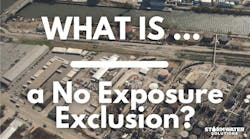Key Highlights
- Construction site runoff transports sediment, chemicals and debris into local waterways, impacting water quality and aquatic life.
- Effective runoff management includes site planning, erosion control, sediment barriers and early site stabilization to minimize environmental harm.
- Regulations like the CGP require stormwater pollution prevention plans and BMPs to control runoff from large construction projects.
Starting work on a fresh construction site often involves moving land around and grading soil so that building can begin. Whether it is a housing development or a high-rise building, moving the soil around can loosen contaminants that are buried within. In addition to any soil contamination that is on a given construction site, any sort of chemicals or debris on the site may get washed away during a rain event. This is known as construction site runoff.
What is construction site runoff?
Construction site runoff is polluted stormwater that carries sediment, chemicals and other debris from a construction site into local waterways.
Sediment from construction sites is one of the most significant pollutants, often caused by exposed soil and excavation. Chemicals included oils, fuels, solvents and paints from construction equipment and materials. Debris in the runoff can include trash and litter from the site, and nutrients in the runoff can be from fertilizers and other materials on site.
Key takeaway: Construction site runoff refers to stormwater that flows across, through or off an active construction site and carries with it dislodged soil, exposed materials, debris and other pollutants.
Why it matters
Construction sites represent a unique source of stormwater-related pollution: when soil is disturbed, vegetation removed and surfaces left bare, rainfall transforms ground disturbance into mobile sediment and stormwater becomes the transport vehicle.
According to the U.S. Environmental Protection Agency (EPA), “sediment is the primary pollutant of concern associated with construction site stormwater runoff.”
Beyond sediment, construction site runoff often contains oils, grease, concrete washout, nutrients and other chemicals – all of which can degrade waterways, fill channels, increase turbidity and stress aquatic life.
What is runoff in simple terms?
In simple terms, runoff is the portion of rainfall or snowmelt that flows over the land surface because it cannot soak into the ground or evaporate.
When water falls on saturated soils, paved surfaces, roofs or driveways, it moves downhill under gravity and often enters storm drains, streams or channels rather than filtering into the ground. For stormwater professionals, runoff is a key concept because it carries sediment, pollutants, debris and excess flow into receiving waters – posing risks for flooding, erosion and water quality degradation.
Key takeaway: Understanding runoff helps municipal and development teams design effective drainage systems, control impervious surfaces and implements green infrastructure that slows, detains or filters flow, reducing the adverse impacts of unmanaged runoff.
How is construction site runoff regulated?
Construction site runoff is identified in the municipal separate storm sewer system (MS4) permitting framework as a minimum control measure required for permittees to manage. The federal Construction General Permit (CGP) sets out requirements for projects disturbing once acre or more: develop a Stormwater Pollution Prevention Plan (SWPPP), install and maintain Best Management Practices (BMPs), minimize exposure of soils and stabilize disturbed areas when activity ceases.
Key management elements
Effective construction site runoff management hinges on a few core practices:
- Site planning and sequencing: Minimizing the footprint of disturbance at any one time, protecting adjacent waterways and phasing construction to limit exposed soils.
- Erosion control: Measures such as mats, mulch, temporary seeding or geotextiles applied to prevent soil detachment.
- Sediment control: Devices such as silt fences, sediment basins, check dams or fiber rolls that intercept sediment-laden runoff before it leaves the site.
- Conveyance management: Diverting clean flows around disturbed areas, installing temporary swales or inlets and maintaining storm drain cleanliness.
- Stabilization: Final site restoration with vegetation or cover as early as possible to reduce exposure time.
- Inspections and maintenance: Regular checks of BMPs and prompt repairs or replacements where they fail.
Why is runoff a problem?
Unchecked construction site runoff can lead to multiple problems: sediment accumulation in receiving water that harms aquatic habitat; increased turbidity and reduced light penetration; clogged storm drains and water infrastructure; heightened flood risk; and possible non-compliance with permits – leading to enforcement actions.
What it means for stormwater professionals
Stormwater and erosion control professionals play a key role in overseeing construction site runoff because the interface between and-disturbing activity and water quality is critical. Construction sites are often temporary yet intense sources of pollutants. If BMPs are not properly chosen, installed and maintained, the disturbance can generate disproportionately large pollutant loads compared with the site’s size.
By proactively managing runoff at construction sites – through planning, review of site management plans and post-installation maintenance – stormwater programs can reduce long-term liabilities and enhance watershed outcomes.
About the Author
Alex Cossin
Associate Editor
Alex Cossin is the associate editor for Waterworld Magazine, Wastewater Digest and Stormwater Solutions, which compose the Endeavor Business Media Water Group. Cossin graduated from Kent State University in 2018 with a Bachelor of Science in Journalism. Cossin can be reached at [email protected].



